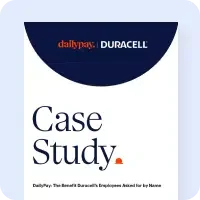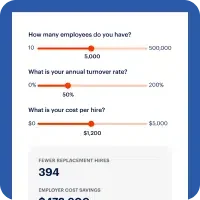Research from consulting firm Gartner reveals that Employee Experience is No. 3 on the Top 5 Priorities for HR Leaders in 2023.
If you support your employees in all aspects of their lives – no matter their definition of success – then they’ll want to work for you.
Reimagining pay processes along with other creative compensation programs has become an important way for companies to help improve employee well-being.
The Evolution of the Employer/Employee Relationship
Employee retention boils down to the employer/employee relationship. A good relationship can last a lifetime. A poor relationship only lasts until one party finds a better opportunity.
The employee/employer relationship is not easy to master, and it becomes even more difficult as the definition evolves.
According to Gartner, “employees are losing their willingness to cooperate with change after dealing with years of disruption. This high employee ‘change fatigue’ and increased work friction are correlated with a lower intent to stay with the organization. According to the same study, only 43% of employees who experience above-average change fatigue intend to stay with their organization, compared with 74% of employees with low levels of fatigue.”
Employees are redefining the employer/employee relationship with 82% of employees saying it’s important for their organization to see them as a person, not just an employee.
When the economy is in disarray, employees take on additional financial stress, and employers have a more difficult time cultivating a positive relationship in the workplace.
The Confounding Impact of the Economy
The COVID-19 pandemic brought the world to a halt. Businesses closed, companies stopped investments, there were mass layoffs. In fact, nearly 4 out of 10 adults in the United States had either been laid off or knew someone that was laid off (Pew Research Center).
Inflation has been the highest it’s been since the 1980s (Pew Research Center). Supply chain issues have also caused a massive increase in prices. With prices across the board increasing, it’s becoming harder and harder for the average American to afford necessities like groceries and gas. According to a Harris Poll commissioned by DailyPay and Funding Our Future, 75% of hourly workers struggled to pay expenses in 2022.”
Prices continue to increase, but research shows wages haven’t been able to keep up with the rapid rate of inflation. In 2022, grocery store prices are expected to increase by more than 10%. (U.S. Department of Agriculture).
In addition to the rising cost of consumer goods, it seems that buying a house is becoming more difficult for the average American. According to a study from Harvard University, home price appreciation has hit an all time high, with a nationwide rate of 20.6% in March of this year. Renting an apartment hasn’t been any easier—according to the same study, rent increases have exceeded 20% in several metro areas. It’s becoming harder for the average American to afford a house, let alone afford rent.
With economic uncertainty growing daily, more and more Americans are worrying about paying rent, paying for their children’s daycare, getting gas, buying groceries and other basic necessities. They’re contemplating whether they need a second job, whether they should take out personal loans and whether they’re prepared to weather whatever the economy holds in store.
In the past, challenging economic times equated to low employee turnover because it’s more difficult to find new employment opportunities in economic downturns, but times are changing. Today employees are more focused on finding an opportunity that aligns their work life with their personal goals and values.
Every situation is unique, but there’s one common thread: they need help and support, and they need it now. Their financial situations aren’t affecting just them, either. They likely have children or other family members relying on them, too. And these financial situations affect more than just what people can afford or how people spend their money—it can affect things like mental health. In a survey conducted by the American Psychological Association, 87% said that the rise in prices of everyday items was a significant source of stress.
It’s Time to Disrupt the Employee/Employer Relationship
Recent disruptions to the economy and society at unprecedented levels have disrupted employee expectations when it comes to the employer/employee relationship.
Money plays less of a role in today’s employer/employee relationship than it has in the past. Although it’s still important, money alone isn’t enough to keep an employee happy, and this was evidenced during the Great Resignation, where millions of Americans voluntarily quit their jobs.
New generations are becoming the majority of the workforce. With their new ways of thinking, recent experiences and the confounding economic impact, they’re redefining expectations for the employer/employee relationship.
According to a 2021 Bankrate survey, 56% of those surveyed said schedule flexibility was their top reason for seeking a new job, not higher pay or job security. The trend was the same even for employees who made less than $30,000 a year.
Today’s employer/employee relationship is measured by work flexibility, modern benefits, training opportunities, career advancement and more.
The traditional relationship successfully functioned on the assumption that employees kept their personal and professional lives separate, meaning they’d do work at work, and find purpose, meaning and fulfillment outside of work, but in today’s economic climate that’s not the norm.
With the evolving definition that says money is no longer the end all, be all of the employer/employee relationship, employers need to find new ways to support workforces.
A good employer/employee relationship uses today’s working norm as its baseline and grows from there. It includes a modern approach to pay processes that support employee well-being.
Modernizing Pay is Part of the Solution
Employee well-being is at the heart of the employer/employee relationship, and here are some ways that employers are helping employees have greater financial control as a way to help improve their well-being.
With greater control, employees can accelerate their financial wellness journey—they can learn how to start budgeting and saving; they can learn how to plan for those inevitable rainy days. They can begin their financial wellness journey to prepare for the inevitable tough times ahead while taking control of their current financial situation.
Full Earnings Transparency
With work notions drastically changing over the past few years, more and more employees are feeling empowered to take more control over their earnings, and one way to do that is by having full transparency into daily earnings.
On-demand Pay
On-demand pay tools allow employees to get their earned pay whenever they want, without having to wait for payday. The best on-demand pay providers allow employees to get paid without making them pay a fee, and they’ll allow employees to access up to 100% of their earned pay.
Real-time Rewards
When employees are instantly recognized for their work, it’s easier for them to associate winning work behavior with a reward, motivating them to be more productive.
Simple Savings Tools
According to the Edelman Financial Engines and DailyPay Funding our Future Study from 2020, 65% of Americans don’t have any type of savings account they can dip into during tough times. When it comes to all Americans, 87% of employed Americans say it is at least somewhat important that their employer offers a retirement savings program, such as a 401(k) account.
The Employer/Employee Relationship Matters Now More Than Ever
When people are struggling to put food on the table or afford a place to live, how can they focus at work? How can they be productive? But above all of that, what’s your duty as the employer to look after your employees as people?
As an employer, you should proactively find ways to help your employees in times of need, not just to better their work performance, but to also better their lives. It’s more important than ever to be there for your employees, to provide them with the tools and support they need to gain greater financial control, so they can support themselves, support their families and meet their needs, personally and professionally.
With the risk of recession looming, employees deserve adequate resources to survive in these times of economic uncertainty. Who’s to say what the next year will bring for the economy, and in turn, the impact it will have on your employees? Anything could happen, and it’s important for employers to equip their employees with the tools they need to continue on their financial wellness journeys.
One way is through on-demand pay. With on-demand pay, your employees can get access to the money they’ve already earned, so they can align their financial resources with their personal needs.
In fact, DailyPay user Jacob C says, “First time I used DailyPay I had paid most of my rent, but the due date was coming, it was like the end of the month, but my payday was a few days after and I wanted to be on time. So I took some of my payday from DailyPay when I was able to, and it covered it. And it worked out great.”
And Nydia P says of on-demand pay through DailyPay, “This has saved me in attaining a rental car because of an accident.”
Both Jacob and Nydia are better able to handle unexpected financial situations; they can avoid late payments and the fees associated with them; they can become less dependent on things like payday loans.
On-demand pay unlocks so much more than early access to pay—it enables employees to take control of their finances, begin their financial wellness journeys, and lead a better life. It’s one of the most useful tools employees can utilize when developing a modern and effective employer/employee relationship.
Get started and learn more about on-demand pay here.













